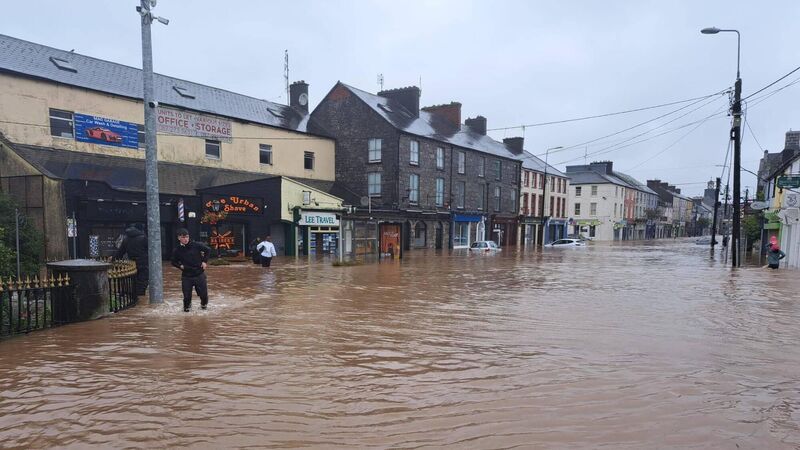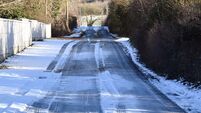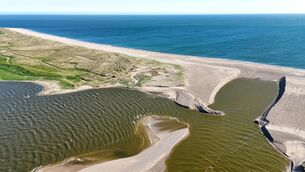Met Éireann expects devastating Storm Babet type floods to happen more frequently

Flooding in Midleton during Storm Babet. Record high sea temperatures across the North Atlantic contributed to the country becoming warmer and rainier that normal, contributing to the flooding that occurred there in October. Picture: Cork County Council
Storm surges and flooding that devastated Midleton and other areas in Cork are likely to increase in the future as the climate changes, Met Éireann has warned.
Last year was the warmest ever in Ireland by a "large margin", even though levels of rainfall were much higher than the long-term average, according to the weather body.
Record high sea temperatures across the North Atlantic contributed to the country becoming warmer and rainier that normal, contributing to the flooding that occurred in the likes of Midleton in October, it said.
It warned that storm surge and coastal flooding risk around Irish coasts is expected to increase in the future along with ‘compound events’ involving heavy rainfall and high tides combined. Compound events are combinations of multiple climate impact drivers that occur at the same time, in the same area or both, according to Met Éireann.
It was the second year in a row that the country broke its record for the warmest year, with average shaded air temperature provisionally 11.20C in 2023, which is 1.65C above the levels seen between 1961 and 1990, and 0.38C warmer than 2022, which was the previous warmest year.
Shade air temperature is when a thermometer is protected from sunshine or rain directly impacting or spiking a reading, thereby allowing the free passage of air to accurately gauge the actual temperature..
It was the warmest year on record at 21 stations that vary record lengths between 10 and 83 years, Met Éireann said. The highest temperature of the year was recorded in Carlow on June 13 at just under 29C, while Mount Dillon in Roscommon observed the coldest temperature in Ireland on January 17 at -7C.
Some 23 stations had their warmest June on record, while 14 stations broke their September maximum temperature records.
When it came to rain, four stations had their wettest March on record, and 12 had their wettest July on record. Some 17 stations in July recorded 200% of their average long-term rainfall, Met Éireann said.
Both Roches Point and Cork Airport had their wettest September since 2006, while Shannon Airport had its wettest September since 2010.
Three Cork stations had their wettest October on record, according to the data. Cork Airport saw 222% of its long-term average, breaking a record going back 61 years for October, while Roches Point and Moore saw almost the same rainfall, breaking records of 19 years and 59 years respectively.
"One contributing factor to Ireland having such a warm and wet 2023 is the record high sea surface temperatures across the North Atlantic since April. Along with this came a severe marine heatwave to the west of Ireland during the month of June.
"This contributed to the increase in both the mean temperatures and moisture content in the atmosphere over Ireland. In 2023 we saw numerous flooding events in Ireland, especially during the second half of the year, with ‘compound events’ involving heavy rainfall and tidal lock on the rise," Met Éireann said.
Check out the Irish Examiner's WEATHER CENTRE for regularly updated short and long range forecasts wherever you are.












